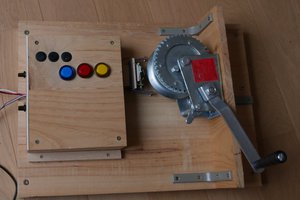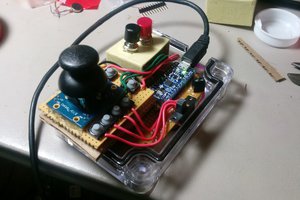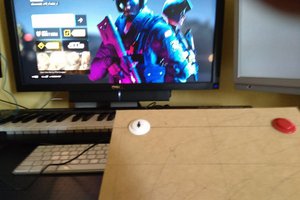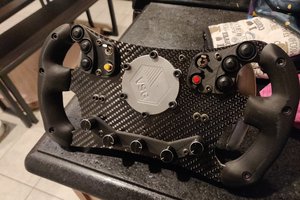I wanted to make a controller with four buttons, which could then be expanded up to 12 presets by hitting more than one button at once. A nice led indicator would also be necessary to indicate what preset you are currently on. A resistor ladder was used to connect the buttons and free up pins. If you do create a resistor ladder, make sure to wire the buttons with different resistor values if you want to be able to distinguish multiple button presses at once. I used 220, 390, 680, and 2.2k ohm resistors to ensure adequate separation between the buttons and used a 1K resistor to tie the analog pin to ground. As with everything in programming, there are always 100 different ways to do the same thing, but I wanted something a little more elegant than just using digital writes to turn leds on and off. Seeing as I had nice clear colored leds, I figured a pwm cycled sine wave would provide a pleasing fading effect to the leds. To do this, I had the buttons switch boolean values on and off which then triggered the key presses and leds, otherwise the fading effect would stop as soon as you let go of the momentary switch. That's enough talking, lets see how it works shall we?
 The LEDs In ACTION!
The LEDs In ACTION!
The Inside of the Box (Please Excuse the Point to Point Wiring!)
 Matthew Kirk
Matthew Kirk


 PixJuan
PixJuan
 Sinclair Gurny
Sinclair Gurny
 Juan M. Casillas
Juan M. Casillas
 Zack
Zack